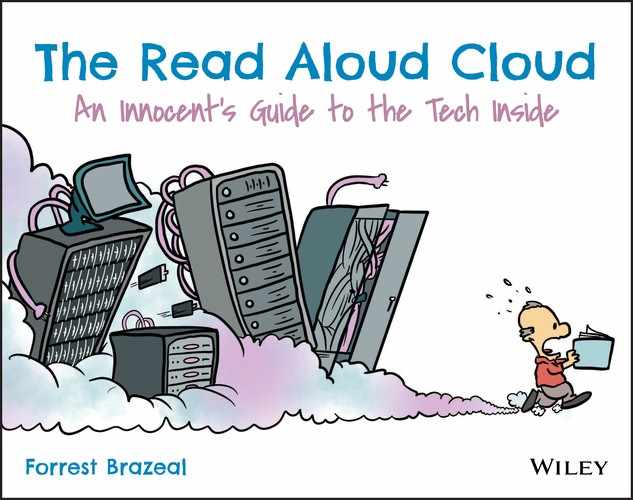
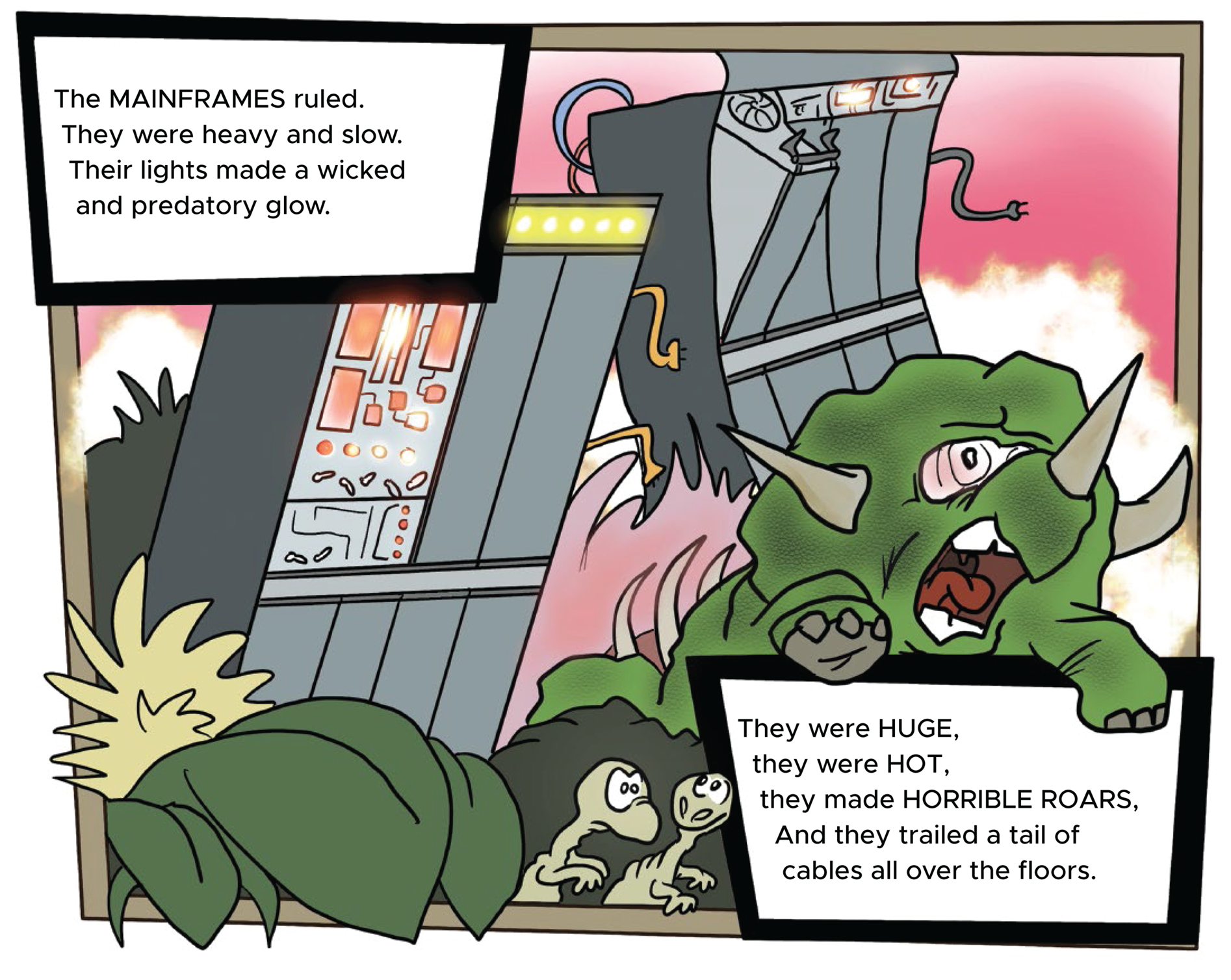
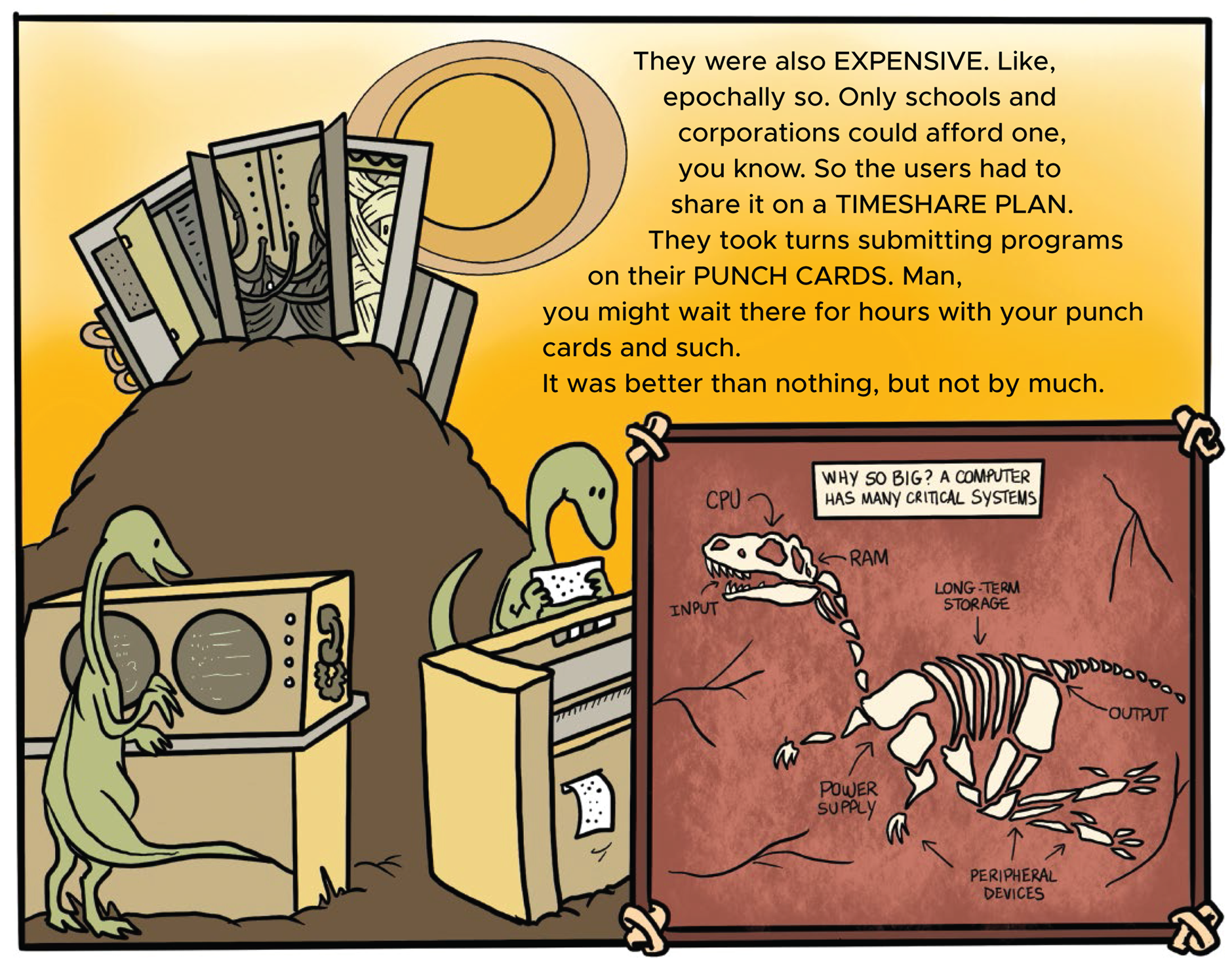

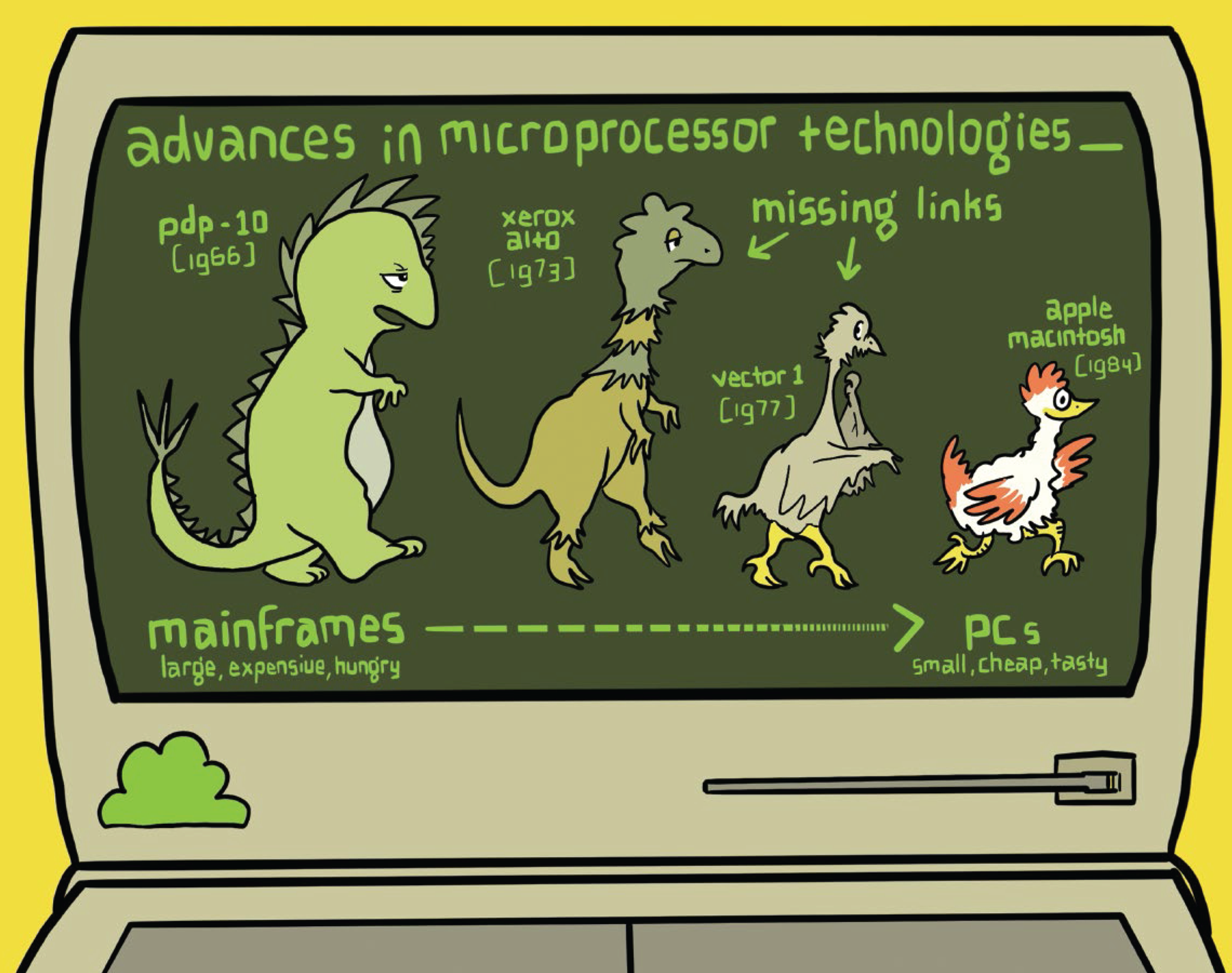
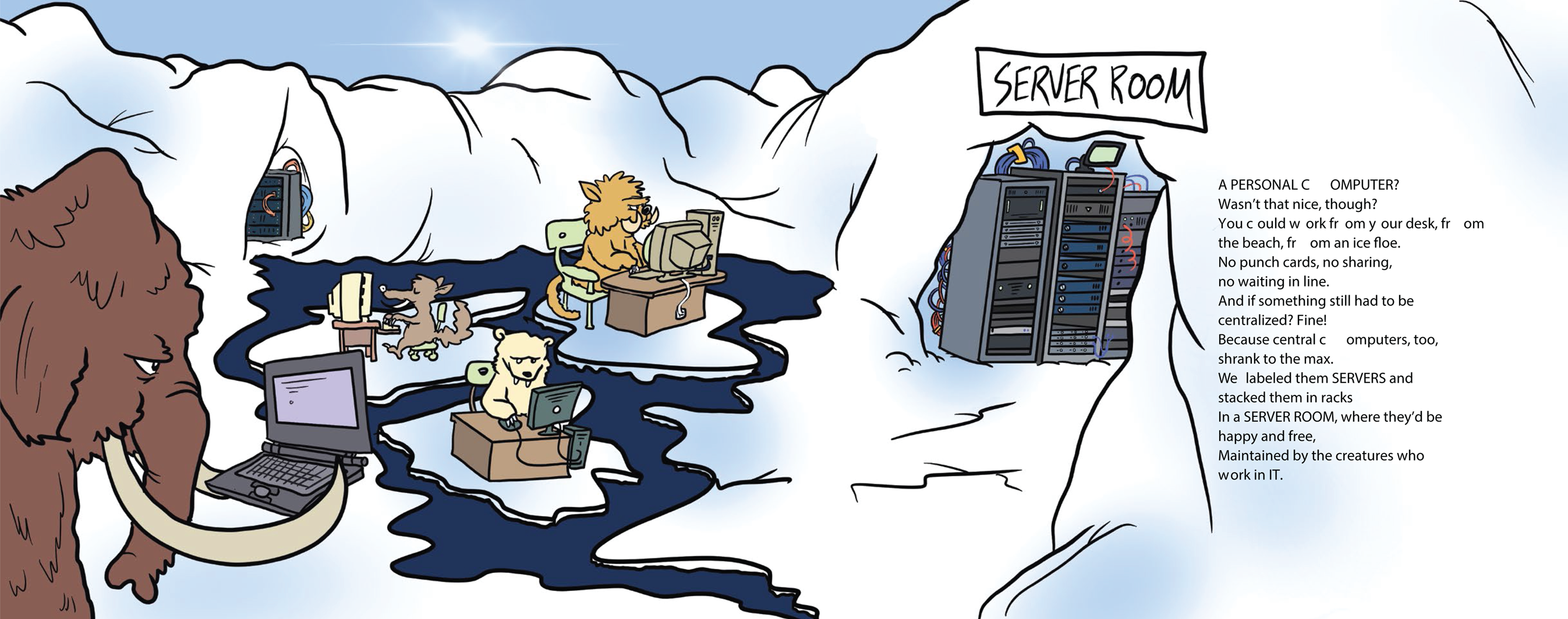
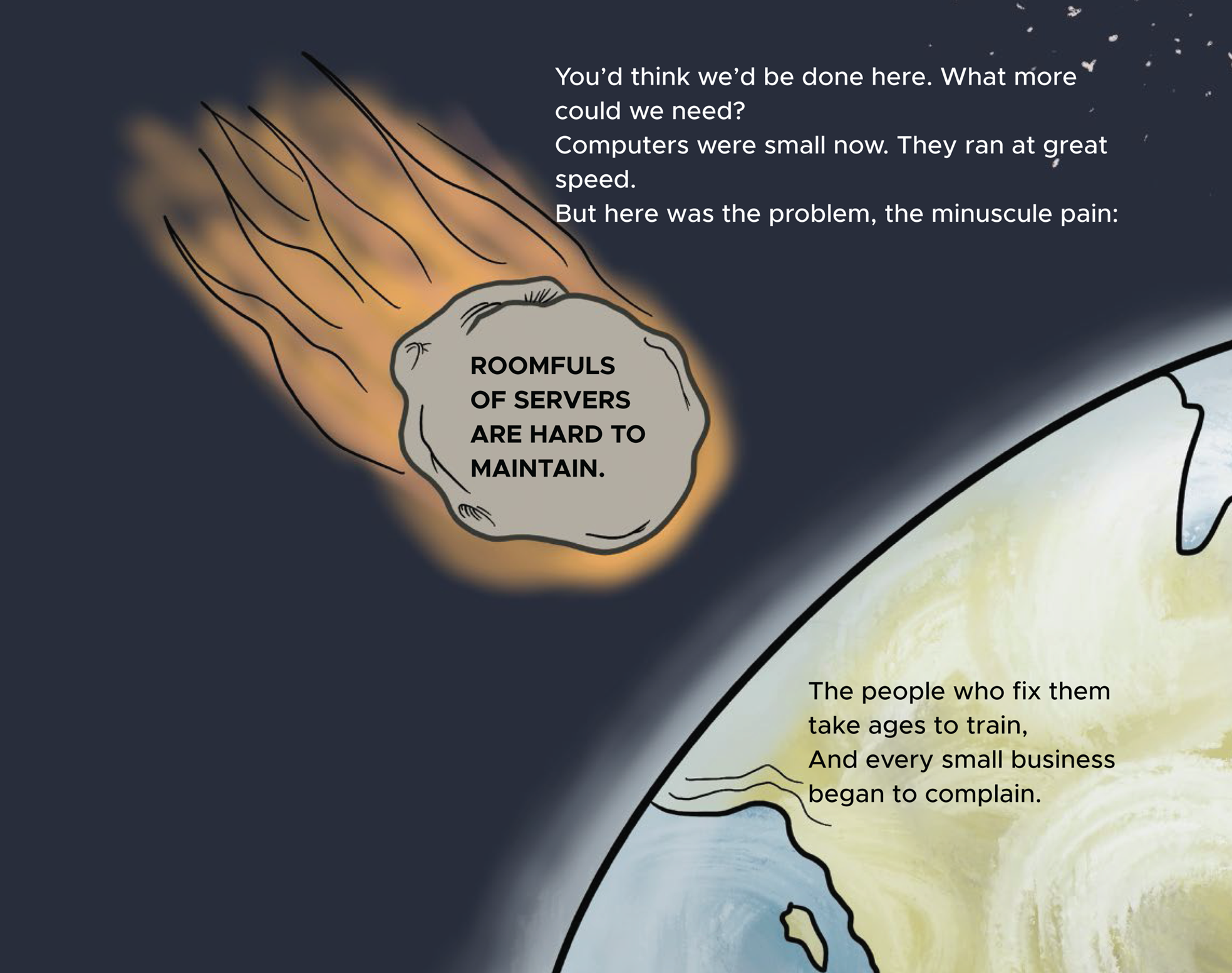
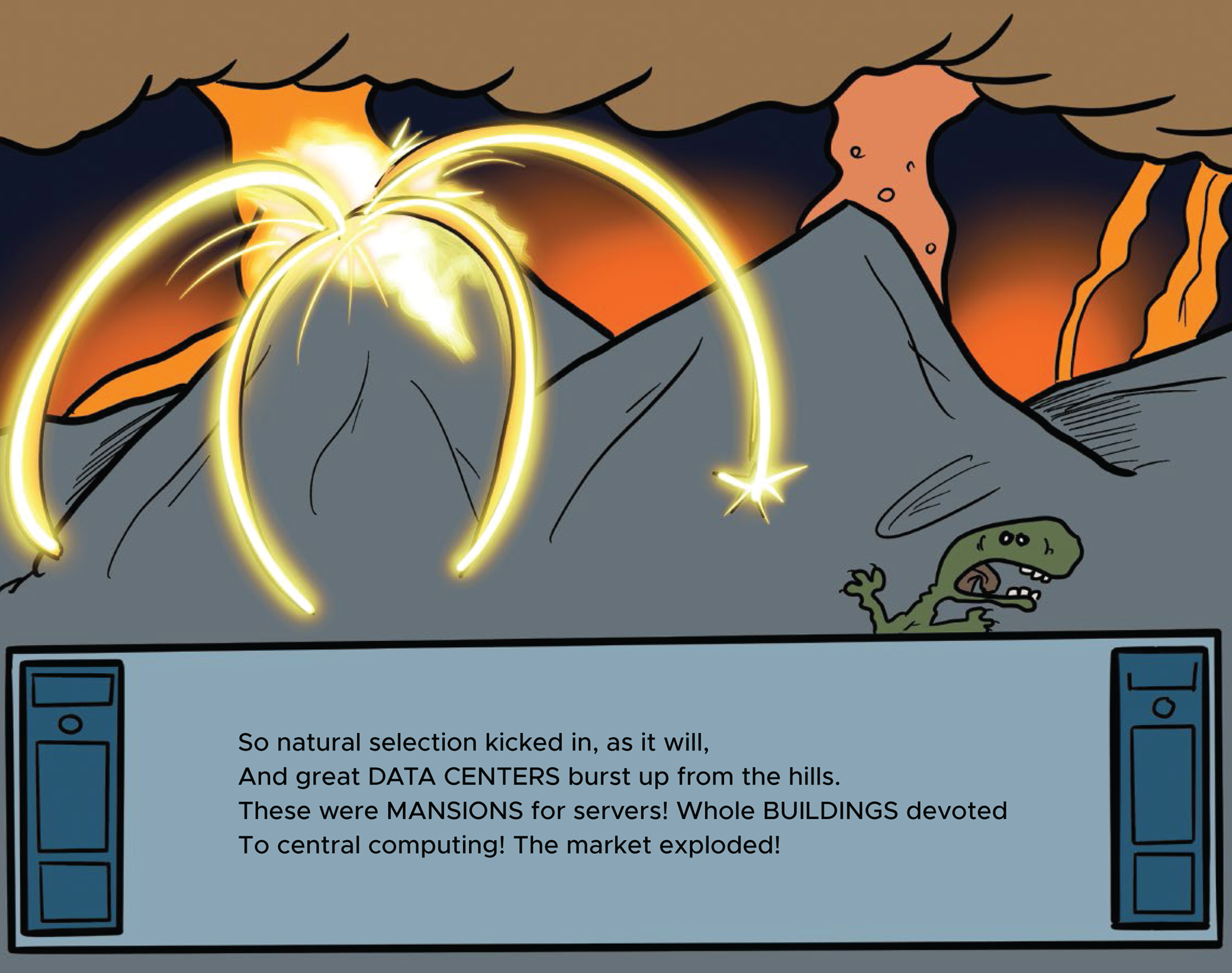

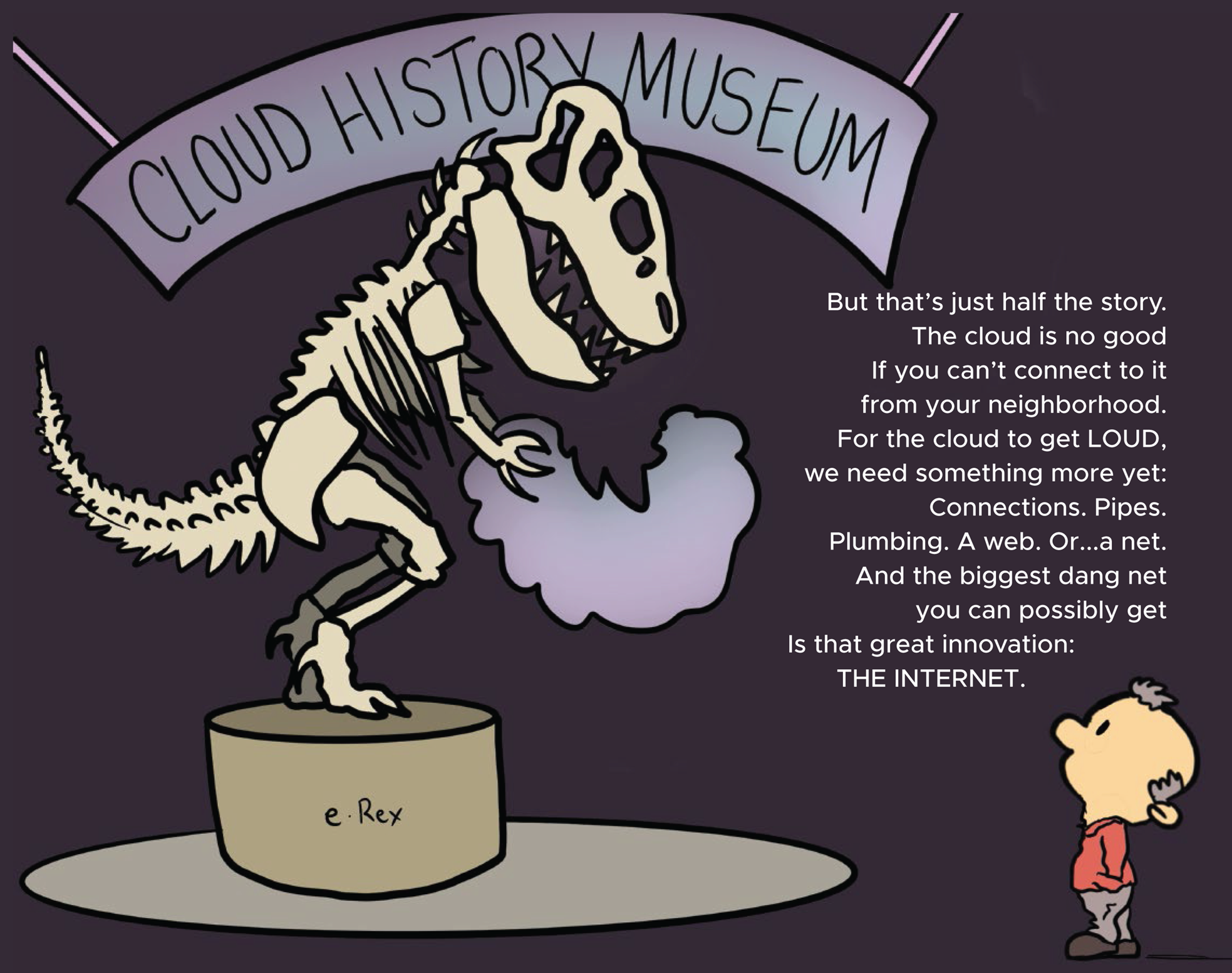
A WORD TO THE NERD
Evolution of the Cloud: A Prehistory
The cloud is the natural convergence of two of the biggest technological innovations of the last half century: cheap, compact computer hardware on the one hand and the Internet on the other. (We'll look more closely at the Internet in the next chapter.)
And yet, some people will still tell you that the cloud is hardly a patch on the original version of centralized, networked computing: the mainframe.
Mainframes: The OG Cloud
Anybody who worked in an office in the 1970s and 1980s has some sort of mainframe story. Giant, cabinet-sized computers. Programs fed in via punched cards and run in batches. Time-sharing: groups of people waiting their turn to access the shared resources. Special cooling systems because of the phenomenal energy required to run all that hardware.
The thing is, though, the mainframe had some right to be enormous because it could do everything. It had storage, CPU, and networking, all onboard. Within the range of its capabilities, it was fast as all heck. And individual mainframes were frequently customized further, with all kinds of hardware and software foofaraws that made them a perfect fit for a particular business. You could think of a mainframe computer like a very big, very warm, very expensive pet dinosaur that belonged only to you and could get you wherever you needed to go.
Mainframes are absolutely still in use today—in fact, studies estimate that as much as 70 percent of production workloads (computer programs that do important work) still run on mainframes. Our core financial infrastructure, our airlines, our utilities…all to some extent rely on hardware and software designs that are 30 to 50 years old.
Mainframes have downsides. They're unwieldy, expensive, and getting harder and harder to keep in running order as the generation of engineers who specialized in them reaches retirement age. But mainframes got one essential thing right: they centralized the hard work of running shared software, like databases, so that regular users could focus on getting their jobs done. And any improvement on the mainframe would have to check that box.
PCs: The Hardware Gets Smaller
The trend away from mainframes began in the early 1980s when manufacturers like IBM and Apple began mass-producing “desktop computers” small enough to run from home. No longer was computing something that happened only while plugged into a behemoth machine at the office. And so for a number of years, desktop applications like Microsoft Office helped decentralize work, pushing more processing responsibilities onto client computers.
These PCs still needed to connect to central systems for some work tasks, though. And as hardware advances continued to drive down the price and size of small computers, the large, expensive mainframes gradually gave way to “server closets”: racks of cheaper computers that could be more easily replaced and maintained.
As computing needs grew, some companies overflowed their server closets or server rooms and began dedicating entire buildings as “data centers.” Remember what we said about mainframes requiring special cooling? That was even more true of the fiery hotness of data centers. Add in fire suppression systems, security guards, constant maintenance when hard drives failed or servers crashed, and you can understand how IT expenditures were going through the roof.
(You might be wondering why IT kept getting more expensive if individual computers were getting cheaper. This is an interesting dilemma called the Jevons paradox. It turns out that when we make something easier to access—electricity, hot water, streaming television, computers, whatever—people consume more of it. So costs go up, but ideally that's because we're getting much more value.)
Hosted Data Centers: Mainframes as a Service
Once enough people got a taste of running their own data centers, a lot of people got a taste for not doing that anymore ever again. And into the breach stepped a number of managed hosting providers. They'd run the data center for you. And instead of you buying servers and buildings to put them in (known as capital expenditures, or CapEx), you could just rent server time by the month (operational expenditures, or OpEx). For reasons that have never been fully clear to me, corporate accountants often prefer OpEx.
Somewhere along the line, the most advanced of these hosting providers, the ones with the best features and the most reliable services, became known as cloud providers. And today, you can rent compute time, storage space, or any number of higher-level managed services over the Internet with just a few clicks of your mouse. We've come full circle: just like you relied on a mainframe for central processing tasks in the 1970s, today much of your work may happen on cloud servers through web apps like Salesforce or Google Docs. Under the hood, complex automation is performing “timesharing” for you across thousands of cloud servers.
So is the cloud just a mainframe with extra steps? No, that's not really fair to say. A mainframe typically serves just one company or university. The cloud providers host software for millions of customers. Because of this, they're able to tune and refine their offerings to produce services that operate at higher and higher levels of abstraction. It's like having a great hive mind working on your behalf, solving problems before you even know you're going to have them.
It's getting to the point where the cloud is less of a product and more of a utility, like electricity or water. You can expect to turn the spigot and get IT on tap. If you ask me, that's a pretty highly evolved state of affairs.

